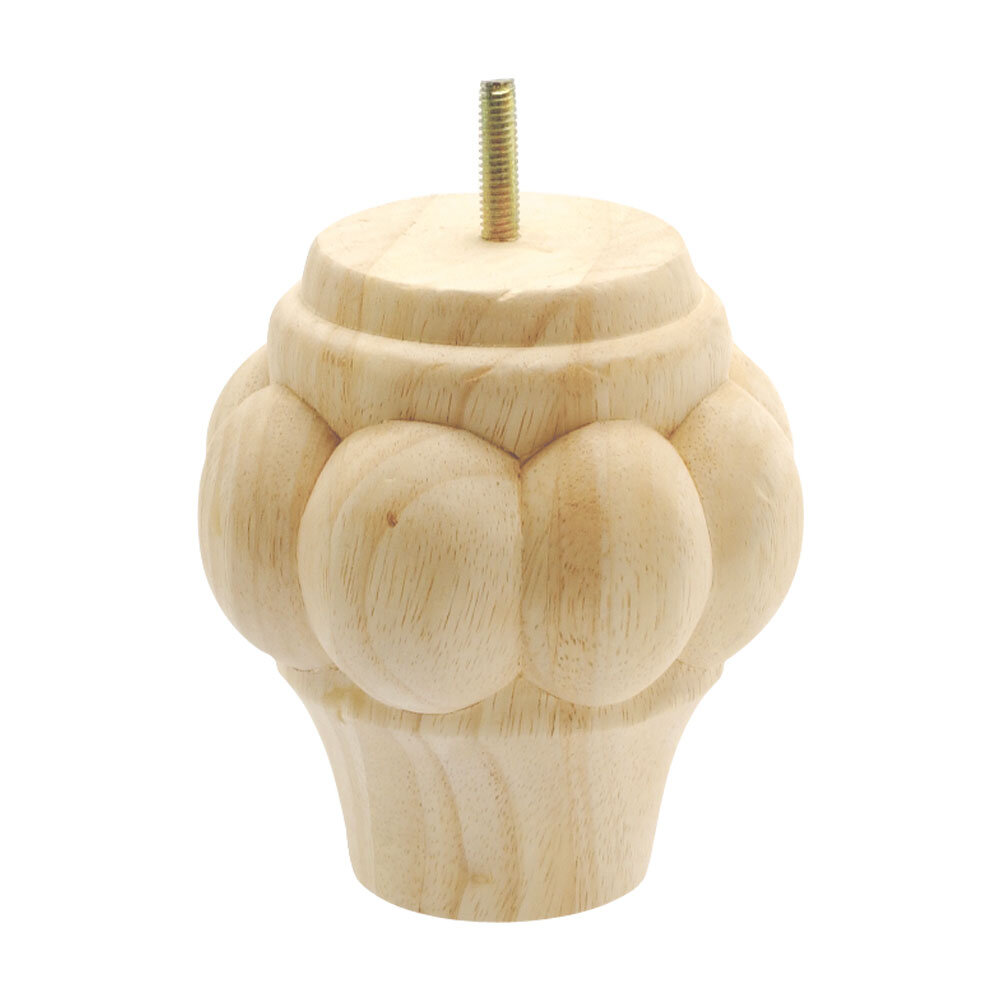Everything You Need to Know When Replacing a Furniture Bun Foot
What are bun feet?
Bun feet, also known as furniture feet, are commonly found beneath sofas, armchairs, dressers, beds, armoires, love seats, and other furniture pieces.
Wood bun feet that feature geometric shapes, fun curves, and crisp lines are well suited for Midcentury furniture. They also look great with Art Deco style decor.
If you own an antique sofa, armchair, bed or other traditional style furniture, you will want a bun foot with an ornate design. These Victorian-style furniture legs add elegance and are perfect for restoration projects.
I want to replace the old legs on my sofa. What if my existing threaded insert doesn’t match my new bun foot?
How do I stain or paint an unfinished wood bun foot?
PREPARING TO STAIN.
First, decide whether to use either an oil based or acrylic based stain. Whichever you decide, you will also be using the same type of sealer to finish up the staining process. It’s very important to test your stain colors on smaller samples of wood so that you know exactly how the finish will appear on your furniture leg.
Stains will produce fumes, so make sure your area is well ventilated! Also, for best finishing results, the room temperature should be between 70 and 75 degrees Fahrenheit.
SANDING.
In some instances, a wood bunfoot will need to be sanded down to remove scratches, scuffs, etc. Brush off any debris once sanding is complete.
PRE-STAINING WOODS.
Not all woods are uniform in color or texture. Woods are porous with different densities, therefore, wood will absorb the stain in an uneven manner. To achieve a consistent and even finish, use a pre-stain wood conditioner found at any home store. Apply the pre-stain wood conditioner on the raw wood bun foot using a cloth or brush. Allow it to penetrate for 10-15 minutes. Remove any excess afterwards. The stain should be applied within 2 hours.
STAINING.
Apply the stain on your wood furniture leg with a wide brush evenly or a rag. When applying, always go with the grain AND against the grain. The purpose is to apply the stain to cover all visible surfaces. It depends on how light or dark you need the wood to be. If you need a lighter look, wipe off the stain immediately. For a darker tone, leave the stain for 5-10 minutes before wiping it.
When cleaning off the stain residue, go in the direction of the grain so that the stain will penetrate into the grain of the wood. If a second coat is required, it is advisable to light sand the wood with the 120 Grit sandpaper and wipe off any debris.
Brushes are better for staining ornate carvings and other had to reach areas. Rags are best for flat surfaces. If you are an experienced woodworker, you can achieve an antique finish by using watered down black paint and brush it into the cracks and details or your wood ornaments. After a few minutes of applying the watered down black paint, wipe off any excess. This will add a beautiful accent to your carved wood ornaments.
SEALING YOUR WOOD.
Remember, stain will only provide color to your wood, NOT A FINISH. Therefore, you must apply a sealer. Remember to use the same base type of material. That is, oil based stain to oil based sealer, acrylic based stain to acrylic based sealer. Apply using a brush or sprayer. Let it dry. If needed, sand with 220 grit sandpaper. Wipe clean and apply another coat of the polyurethane sealer. Sealers are mostly known as varnish, shellac or wood polish.


















